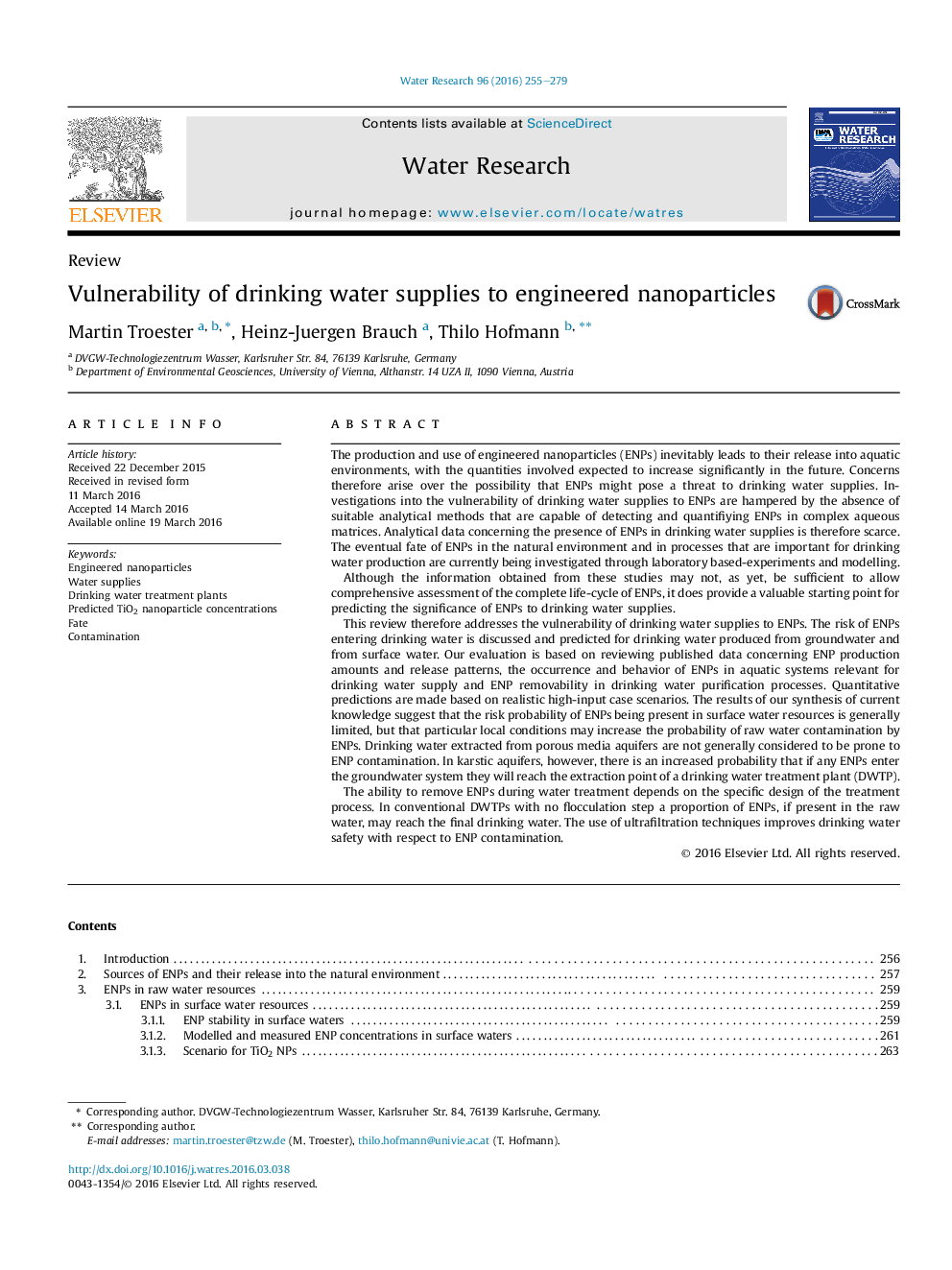| کد مقاله | کد نشریه | سال انتشار | مقاله انگلیسی | نسخه تمام متن |
|---|---|---|---|---|
| 4480896 | 1623072 | 2016 | 25 صفحه PDF | دانلود رایگان |
• Literature concerning contamination of drinking water with ENPs is reviewed.
• The likelihood of ENPs to appear in different types of water resources is discussed.
• The removability of ENPs in drinking water treatment is discussed.
• The vulnerability of drinking water supplies to ENPs is assessed.
• TiO2 ENP concentrations are predicted for sites of high TiO2 ENP input.
The production and use of engineered nanoparticles (ENPs) inevitably leads to their release into aquatic environments, with the quantities involved expected to increase significantly in the future. Concerns therefore arise over the possibility that ENPs might pose a threat to drinking water supplies. Investigations into the vulnerability of drinking water supplies to ENPs are hampered by the absence of suitable analytical methods that are capable of detecting and quantifiying ENPs in complex aqueous matrices. Analytical data concerning the presence of ENPs in drinking water supplies is therefore scarce. The eventual fate of ENPs in the natural environment and in processes that are important for drinking water production are currently being investigated through laboratory based-experiments and modelling.Although the information obtained from these studies may not, as yet, be sufficient to allow comprehensive assessment of the complete life-cycle of ENPs, it does provide a valuable starting point for predicting the significance of ENPs to drinking water supplies.This review therefore addresses the vulnerability of drinking water supplies to ENPs. The risk of ENPs entering drinking water is discussed and predicted for drinking water produced from groundwater and from surface water. Our evaluation is based on reviewing published data concerning ENP production amounts and release patterns, the occurrence and behavior of ENPs in aquatic systems relevant for drinking water supply and ENP removability in drinking water purification processes. Quantitative predictions are made based on realistic high-input case scenarios. The results of our synthesis of current knowledge suggest that the risk probability of ENPs being present in surface water resources is generally limited, but that particular local conditions may increase the probability of raw water contamination by ENPs. Drinking water extracted from porous media aquifers are not generally considered to be prone to ENP contamination. In karstic aquifers, however, there is an increased probability that if any ENPs enter the groundwater system they will reach the extraction point of a drinking water treatment plant (DWTP).The ability to remove ENPs during water treatment depends on the specific design of the treatment process. In conventional DWTPs with no flocculation step a proportion of ENPs, if present in the raw water, may reach the final drinking water. The use of ultrafiltration techniques improves drinking water safety with respect to ENP contamination.
Figure optionsDownload high-quality image (306 K)Download as PowerPoint slide
Journal: Water Research - Volume 96, 1 June 2016, Pages 255–279
